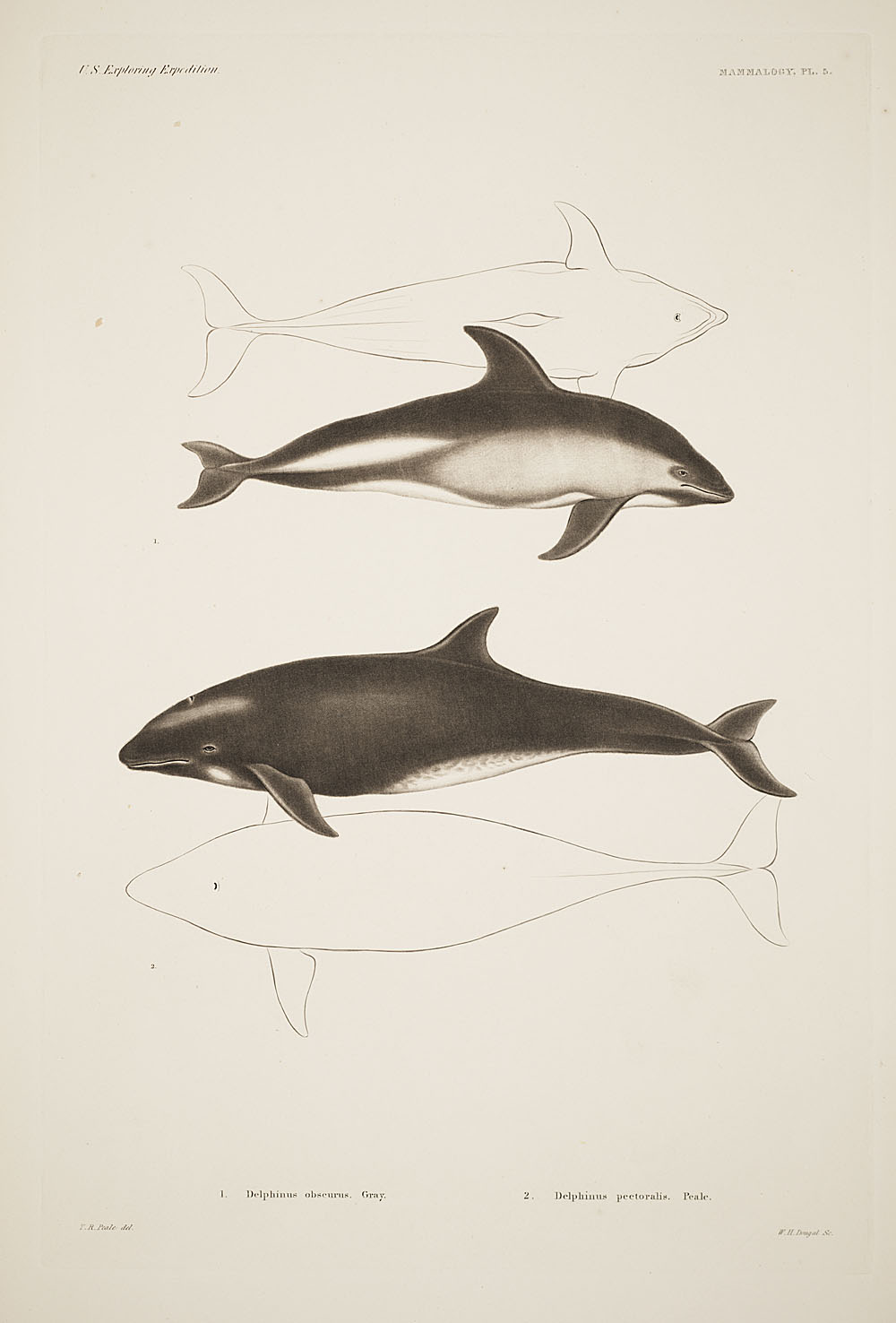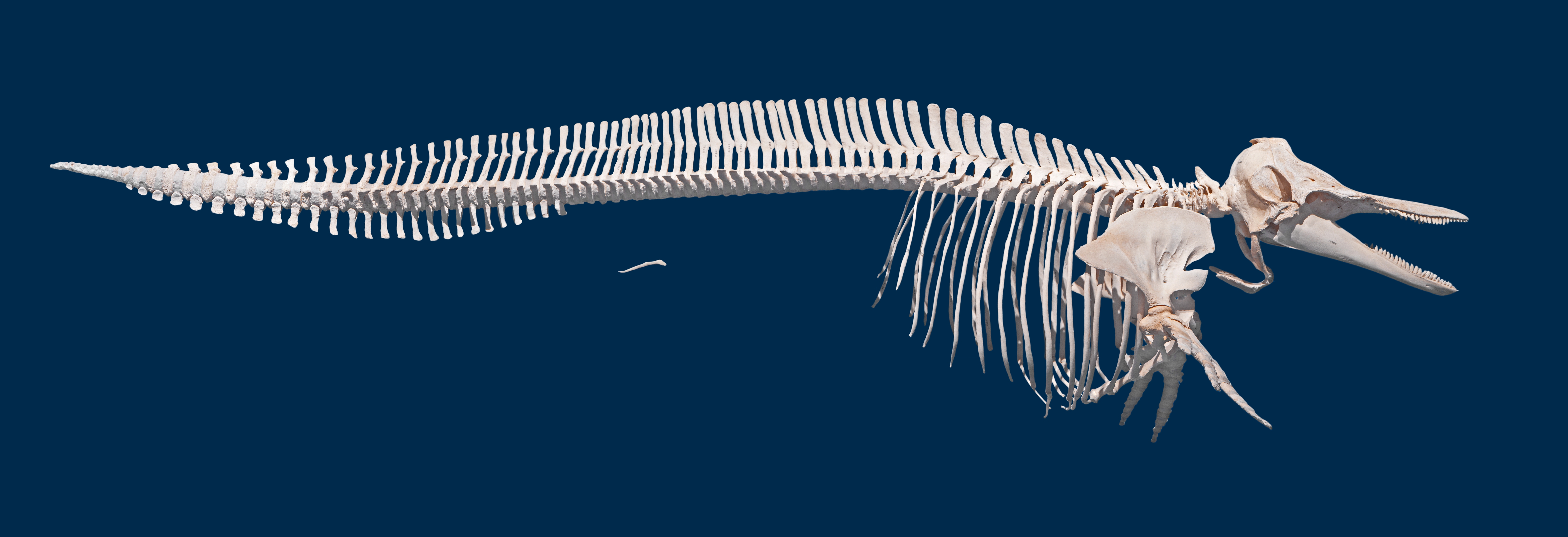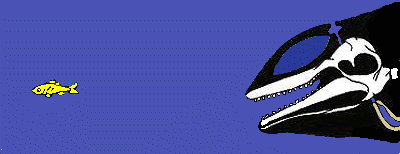|
Lagenorhynchus
''Lagenorhynchus'' is a genus of oceanic dolphins in the infraorder Cetacea, presently containing six extant species. However, there is consistent molecular evidence that the genus is polyphyletic and several of the species are likely to be moved to other genera. In addition, the extinct species ''Lagenorhynchus harmatuki'' is also classified in this genus. Etymology The name ''Lagenorhynchus'' derives from the Greek ''lagenos'' meaning "bottle" and ''rhynchus'' meaning "beak". Indeed, the "bottle-nose" is a characteristic of this genus. However, the dolphins popularly called bottlenose dolphins belong in the genus '' Tursiops''. Taxonomy There is compelling evidence from molecular phylogeny that the genus ''Lagenorhynchus'' is polyphyletic, meaning that it currently contains several species that are not closely related. found that the white-beaked and Atlantic white-sided dolphins are phylogenetically isolated within the Delphinidae, where they are believed to be rather ... [...More Info...] [...Related Items...] OR: [Wikipedia] [Google] [Baidu] |
Atlantic White-sided Dolphin
The Atlantic white-sided dolphin (''Lagenorhynchus acutus'') is a distinctively coloured dolphin found in the cool to temperate waters of the North Atlantic Ocean. Description The dolphin is slightly larger than most other oceanic dolphins. It is just over a meter in length at birth, growing to about (males) and (females) at maturity. It weighs 180–230 kg (400- 510 lb) once fully-grown. Females reach sexual maturity at between 6 and 12 years, and males between 7 and 11 years. The gestation period is 11 months and lactation lasts for about 18 months — both typical figures for dolphins. Individuals are known to live for at least 17 years. The key distinguishing feature is the white to pale yellow patch found behind the dorsal fin of the dolphin on each side. This colour variation is unique amongst the mixtures of white, greys and blues of other pelagic cetaceans. The rest of the body's coloration is well demarcated: the chin, throat and belly are white; the flippe ... [...More Info...] [...Related Items...] OR: [Wikipedia] [Google] [Baidu] |
Dusky Dolphin
The dusky dolphin (''Lagenorhynchus obscurus'') is a dolphin found in coastal waters in the Southern Hemisphere. Its specific epithet is Latin for "dark" or "dim". It is very closely genetically related to the Pacific white-sided dolphin, but current scientific consensus holds they are distinct species. The dolphin's range is patchy, with major populations around South America, southwestern Africa, New Zealand, and various oceanic islands, with some sightings around southern Australia and Tasmania. The dusky dolphin prefers cool currents and inshore waters, but can also be found offshore. It feeds on a variety of fish and squid species and has flexible hunting tactics. The dusky dolphin is known for its remarkable acrobatics, having a number of aerial behaviours. The status of the dolphin is unknown, but it has been commonly caught in gill nets. Taxonomy It is commonly thought that the dusky dolphin was first described by John Edward Gray in 1828 from stuffed skin and a si ... [...More Info...] [...Related Items...] OR: [Wikipedia] [Google] [Baidu] |
Lagenorhynchus Harmatuki
''Lagenorhynchus'' is a genus of oceanic dolphins in the infraorder Cetacea, presently containing six extant species. However, there is consistent molecular evidence that the genus is polyphyletic and several of the species are likely to be moved to other genera. In addition, the extinct species '' Lagenorhynchus harmatuki'' is also classified in this genus. Etymology The name ''Lagenorhynchus'' derives from the Greek ''lagenos'' meaning "bottle" and ''rhynchus'' meaning "beak". Indeed, the "bottle-nose" is a characteristic of this genus. However, the dolphins popularly called bottlenose dolphins belong in the genus '' Tursiops''. Taxonomy There is compelling evidence from molecular phylogeny that the genus ''Lagenorhynchus'' is polyphyletic, meaning that it currently contains several species that are not closely related. found that the white-beaked and Atlantic white-sided dolphins are phylogenetically isolated within the Delphinidae, where they are believed to be rath ... [...More Info...] [...Related Items...] OR: [Wikipedia] [Google] [Baidu] |
Lagenorhynchus Albirostris
The white-beaked dolphin (''Lagenorhynchus albirostris'') is a marine mammal belonging to the family Delphinidae (oceanic dolphins) in the suborder Odontoceti (toothed whales). Taxonomy The species was first described by the British taxonomist John Edward Gray in 1846. Due to its relative abundance in European waters, it was among the first of the genus ''Lagenorhynchus'' (''lagenos'', Latin for "bottle" or "flask"; ''rhynchos'', "beak" or "snout") to be known to science. Its specific name, ''albirostris'', translates to "white beak", a reference to the color of the species' beak, a diagnostic (albeit variable) trait useful in identification. Description The white-beaked dolphin is a robust species of dolphin with a short beak. Adults can reach long and weigh . Calves are long at birth and probably weigh about . The upper body and flanks are dark grey with light grey patches, including a 'saddle' behind the dorsal fin, while the underside is light grey to almost white in colo ... [...More Info...] [...Related Items...] OR: [Wikipedia] [Google] [Baidu] |
White-beaked Dolphin
The white-beaked dolphin (''Lagenorhynchus albirostris'') is a marine mammal belonging to the family Delphinidae (oceanic dolphins) in the suborder Odontoceti (toothed whales). Taxonomy The species was first described by the British taxonomist John Edward Gray in 1846. Due to its relative abundance in European waters, it was among the first of the genus ''Lagenorhynchus'' (''lagenos'', Latin for "bottle" or "flask"; ''rhynchos'', "beak" or "snout") to be known to science. Its specific name, ''albirostris'', translates to "white beak", a reference to the color of the species' beak, a diagnostic (albeit variable) trait useful in identification. Description The white-beaked dolphin is a robust species of dolphin with a short beak. Adults can reach long and weigh . Calves are long at birth and probably weigh about . The upper body and flanks are dark grey with light grey patches, including a 'saddle' behind the dorsal fin, while the underside is light grey to almost white in colo ... [...More Info...] [...Related Items...] OR: [Wikipedia] [Google] [Baidu] |
Delphinidae
Oceanic dolphins or Delphinidae are a widely distributed family of dolphins that live in the sea. Close to forty extant species are recognised. They include several big species whose common names contain "whale" rather than "dolphin", such as the Globicephalinae (round-headed whales including the orca and pilot whale). Delphinidae is a family within the superfamily Delphinoidea, which also includes the porpoises (Phocoenidae) and the Monodontidae (beluga whale and narwhal). River dolphins are relatives of the Delphinoidea. Oceanic dolphins range in size from the and Maui's dolphin to the and orca, the largest known dolphin. Several species exhibit sexual dimorphism; the males are larger than females. They have streamlined bodies and two limbs that are modified into flippers. Though not quite as flexible as seals, some dolphins can travel at speeds 29 km/h (18 mph) for short distances. Most delphinids primarily eat fish, along with a smaller number of squid and small ... [...More Info...] [...Related Items...] OR: [Wikipedia] [Google] [Baidu] |
Lissodelphininae
Oceanic dolphins or Delphinidae are a widely distributed family of dolphins that live in the sea. Close to forty extant species are recognised. They include several big species whose common names contain "whale" rather than "dolphin", such as the Globicephalinae (round-headed whales including the orca and pilot whale). Delphinidae is a family within the superfamily Delphinoidea, which also includes the porpoises (Phocoenidae) and the Monodontidae (beluga whale and narwhal). River dolphins are relatives of the Delphinoidea. Oceanic dolphins range in size from the and Maui's dolphin to the and orca, the largest known dolphin. Several species exhibit sexual dimorphism; the males are larger than females. They have streamlined bodies and two limbs that are modified into flippers. Though not quite as flexible as seals, some dolphins can travel at speeds 29 km/h (18 mph) for short distances. Most delphinids primarily eat fish, along with a smaller number of squid and small ... [...More Info...] [...Related Items...] OR: [Wikipedia] [Google] [Baidu] |
Pacific White-sided Dolphin
The Pacific white-sided dolphin (''Lagenorhynchus obliquidens''), also known as the hookfin porpoise, is an active dolphin found in the cool or temperate waters of the North Pacific Ocean. Taxonomy The Pacific white-sided dolphin was named by Smithsonian mammalogist Theodore Nicholas Gill in 1865. It is morphologically similar to the dusky dolphin, which is found in the South Pacific. Genetic analysis by Frank Cipriano suggests the two species diverged around two million years ago. Though traditionally placed in the genus ''Lagenorhynchus'', molecular analyses indicate they are closer to dolphins of the genus ''Cephalorhynchus'', in the Lissodelphininae subfamily, than to both the Atlantic white-sided dolphin and the White-beaked dolphin. It has therefore been proposed to move the Pacific white-sided dolphin to the resurrected genus ''Sagmatias'' together with other southern hemisphere ''Lagenorhyncus'' species (hourglass dolphin, Dusky dolphin and Peale's dolphin). However, the ... [...More Info...] [...Related Items...] OR: [Wikipedia] [Google] [Baidu] |
Oceanic Dolphin
Oceanic dolphins or Delphinidae are a widely distributed family of dolphins that live in the sea. Close to forty extant species are recognised. They include several big species whose common names contain "whale" rather than "dolphin", such as the Globicephalinae (round-headed whales including the orca and pilot whale). Delphinidae is a family within the superfamily Delphinoidea, which also includes the porpoises (Phocoenidae) and the Monodontidae (beluga whale and narwhal). River dolphins are relatives of the Delphinoidea. Oceanic dolphins range in size from the and Maui's dolphin to the and orca, the largest known dolphin. Several species exhibit sexual dimorphism; the males are larger than females. They have streamlined bodies and two limbs that are modified into flippers. Though not quite as flexible as seals, some dolphins can travel at speeds 29 km/h (18 mph) for short distances. Most delphinids primarily eat fish, along with a smaller number of squid and small ... [...More Info...] [...Related Items...] OR: [Wikipedia] [Google] [Baidu] |
Oceanic Dolphin
Oceanic dolphins or Delphinidae are a widely distributed family of dolphins that live in the sea. Close to forty extant species are recognised. They include several big species whose common names contain "whale" rather than "dolphin", such as the Globicephalinae (round-headed whales including the orca and pilot whale). Delphinidae is a family within the superfamily Delphinoidea, which also includes the porpoises (Phocoenidae) and the Monodontidae (beluga whale and narwhal). River dolphins are relatives of the Delphinoidea. Oceanic dolphins range in size from the and Maui's dolphin to the and orca, the largest known dolphin. Several species exhibit sexual dimorphism; the males are larger than females. They have streamlined bodies and two limbs that are modified into flippers. Though not quite as flexible as seals, some dolphins can travel at speeds 29 km/h (18 mph) for short distances. Most delphinids primarily eat fish, along with a smaller number of squid and small ... [...More Info...] [...Related Items...] OR: [Wikipedia] [Google] [Baidu] |
Hourglass Dolphin
The hourglass dolphin (''Lagenorhynchus cruciger'') is a small dolphin in the family Delphinidae that inhabits offshore Antarctic and sub-Antarctic waters. It is commonly seen from ships crossing the Drake Passage, but has a circumpolar distribution. The species was identified as a new species by Jean René Constant Quoy and Joseph Paul Gaimard in 1824 from a drawing made in the South Pacific in 1820. It is the only cetacean to have been widely accepted as a species solely on witness accounts. Description The hourglass dolphin is colored black on top and white on the belly, with white patches on the sides and sometimes variations of dark grey. For this reason, it was colloquially known by whalers as a "sea cow" (although it does not belong to the taxonomic order Sirenia) or "sea skunk". Each flank has a white patch at the front, above the beak, eye and flipper, and a second patch at the rear. These two patches are connected by a thin white strip, creating, loosely speaking, an ... [...More Info...] [...Related Items...] OR: [Wikipedia] [Google] [Baidu] |
Peale's Dolphin
Peale's dolphin (''Lagenorhynchus australis'') is a small dolphin found in the waters around Tierra del Fuego at the foot of South America. It is also commonly known as the black-chinned dolphin or even Peale's black-chinned dolphin. However, since Rice's work Peale's dolphin has been adopted as the standard common name. Taxonomy Though it is traditionally placed in the genus ''Lagenorhynchus'', recent molecular phylogeny, molecular analyses indicate Peale's dolphin is actually more closely related to the dolphins of the genus ''Cephalorhynchus''. If true, this would mean this species must either be transferred to ''Cephalorhynchus'' or be given a new genus of its own. An alternate genus proposed for this species (as well as the Pacific white-sided dolphin, hourglass dolphin and dusky dolphin is the resurrected genus ''Sagmatias''. Some behavioral and morphological data support moving Peale's dolphin to ''Cephalorhynchus''. According to , Peale's dolphin and the ''Cephalorhynchu ... [...More Info...] [...Related Items...] OR: [Wikipedia] [Google] [Baidu] |








